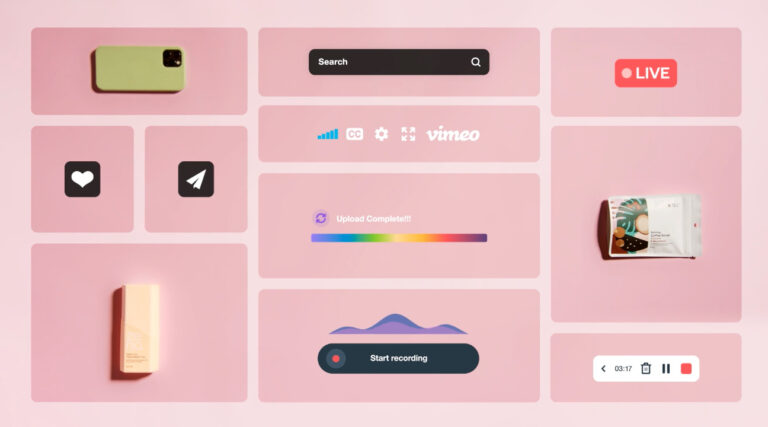Testimonial Page Design: Inspiring Trust, Attracting Customers


Building trust with potential customers is essential for success.
Testimonials, the words of satisfied customers, play a crucial role in establishing credibility and encouraging purchasing decisions.
A well-designed testimonial page can showcase the positive experiences of real people, fostering trust and driving conversions.
Testimonials are a powerful marketing tool that can significantly impact a company’s reputation and sales.
In fact, 46% of consumers trust online reviews as much as personal recommendations.
When potential customers see positive testimonials on your website from others, they are more likely to trust the company and its products or services.
This article delves into the art and science of creating effective testimonial page design, providing actionable insights to help businesses maximize the impact of their customer testimonials.
By understanding the psychology behind testimonials and implementing best practices in website design and content, businesses can transform their testimonial pages into powerful trust-building and conversion-driving assets.
The importance of trust in marketing
Trust is the cornerstone of any successful business-customer relationship.
When potential customers trust a company, they are more likely to engage with it, consider its offerings, and ultimately make a purchase.
Simply put, trust fosters loyalty, encourages repeat business, and contributes to a company’s reputation in the industry.
Leveraging social proof
Businesses can effectively leverage social proof by strategically showcasing testimonials on their websites, social media platforms, and marketing materials.
Testimonials can be incorporated into various marketing elements, such as:
- Website: placing great testimonials prominently on landing pages, product and service pages, and the homepage to display positive customer experiences.
- Social media: sharing testimonials on Google and social media platforms to increase reach and engage with a wider audience.
- Email marketing: including testimonials in email campaigns to personalize messages and build trust with subscribers.
Specificity and relevance
Effective testimonials go beyond vague statements like “great product” or “excellent service.”
They provide details as to what worked well about the product or service, how it improved the customer’s experience, and what specific benefits were achieved.
This specificity helps potential customers understand the tangible value that the company’s offerings can provide to them.
Authenticity and credibility
Testimonials should be authentic and believable.
Avoid using generic or overly promotional language.
Instead, focus on genuine customer experiences and highlight specific benefits.
Include images of the individuals providing testimonials to add a personal touch.
This will resonate with potential customers and make the testimonials more impactful.
Addressing common objections
Effective testimonials can also address common objections that potential customers may have.
For example, if a customer is hesitant to try a product due to its price, a testimonial highlighting the product’s value proposition and long-term cost savings can help alleviate that concern.
Addressing objections proactively can increase the persuasiveness of testimonials.
Using data to support claims
Whenever possible, incorporate data and quantifiable results into testimonials.
This adds credibility and reinforces the positive impact of the company’s products or services.
For instance, instead of simply stating that a product increased sales include a specific percentage or revenue figure.
Using data can make testimonials more objective and persuasive.
5 Types of Testimonials
Testimonials come in various forms, each with its unique strengths and applications.
Consider these common types of testimonials:
1. Customer quotes
Direct quotes from happy customers provide a personal and relatable perspective.
They allow potential customers to hear directly from people who have used and benefited from the company’s products or services.
Customer quotes can be particularly effective in building trust and credibility with potential customers.


2. Case studies
In-depth case studies showcase how a company’s products or services have benefited specific customers.
They provide detailed descriptions of the challenges faced by the customer, the solutions implemented, and the positive outcomes achieved.
Case studies are particularly effective for demonstrating the practical value of a company’s offerings and addressing common customer objections.


3. Video testimonials
Video testimonials add a visual element, making them more engaging and impactful.
They allow potential customers to see and hear the testimonials, which can increase their trust and credibility.
Video testimonials can also be more emotionally resonant than text-based testimonials.


4. Customer stories
Longer narratives that provide a more detailed overview of a customer’s experience with the company.
This can be particularly effective in building a deeper connection with potential customers and highlighting the emotional impact of the company’s products or services.
5. Social media reviews
These are testimonials posted on social media platforms, such as Instagram, Facebook, Twitter, and LinkedIn.


Social media reviews can help reach a wider audience and leverage the social proof that comes from positive feedback on public platforms.
Essential elements of engaging testimonial page design
To create a truly effective testimonial page, consider the following elements.
1. Layout and visual design
The visual presentation of a testimonial page is crucial in capturing attention and conveying a positive impression.
A well-designed page should be visually appealing, organized, and easy to navigate.
- Clear typography: use clear and easy-to-read fonts that are consistent with the overall brand style. Avoid using overly decorative or hard-to-read fonts that might make the testimonials difficult to read.
- Ample white space: use white space effectively to create a sense of balance and prevent the page from feeling cluttered. White space draws attention to the testimonials and makes the page more visually appealing.
- High-quality images: include high-quality images of the testimonial givers to add a personal touch and make the page more engaging. Images can also help break up text and add visual interest. You can use more tools, such as a photo enhancer, which can help you improve your image quality and enhance the visual appeal of your testimonials, making them more impactful and engaging for your audience.
2. Consistency in formatting
Maintain consistency in formatting and styling across all testimonials to create a cohesive and professional look. This makes the page easier to navigate and read, enhancing the overall UX.
- Fonts and font sizes: use consistent fonts and font sizes for all testimonials to maintain a uniform and professional appearance.
- Color palettes: apply a consistent color palette throughout the testimonial page to align with the overall brand identity. This creates a sense of unity and reinforces brand recognition.
3. User-generated content
In addition to curated testimonials from satisfied customers, consider incorporating user-generated content (UGC) to provide a broader perspective and demonstrate the company’s commitment to transparency.
UGC can come from various sources, such as:
- Social media reviews: gather reviews from social media platforms like Facebook, Twitter, and Instagram. These platforms provide a wealth of authentic customer feedback.
- Online forums and communities: seek out testimonials from relevant online forums and communities where customers discuss products or services related to your industry.
- Product review websites: use reputable product review websites to gather testimonials from verified customers. These websites provide a more structured and organized way to collect UGC.


Testimonial Page Examples
They say a picture is worth a thousand words, so here are three examples of the best testimonial page designs by well-known companies.
Kissmetrics
Kissmetrics’ testimonial page abounds with customer success stories, with satisfied users talking about their experiences with the software’s transformative impact.
Each testimonial highlights a distinct feature, emphasizing Kissmetrics’ capabilities and their direct impact on business growth.
Slack
Slack’s “Customer Stories” section is a page where individual companies praise the platform’s power.
These personalized testimonials spotlight key features and how customers have leveraged them.
99designs
99designs testimonial page includes a star-rating system. The top of the page stands out thanks to an eye-catching video, a prelude to the customer reviews that follow. The page’s unique feature allows visitors to filter reviews by category, ensuring they find testimonial examples that resonate most with their needs.
Optimizing testimonial placement for maximum impact
The placement of testimonials is an often overlooked aspect of web design.
This can have a significant impact on their effectiveness in influencing user behavior and driving conversions. B
y strategically positioning testimonials, you can ensure that they are seen by potential customers at the right time and in the right context.
Above the fold vs. below the fold
The “above the fold” refers to the portion of a webpage that is visible without scrolling.
Testimonials placed above the fold have the advantage of immediate visibility, ensuring that they are seen by visitors as soon as they land on the page.
However, this placement can also lead to testimonial saturation, as visitors may encounter multiple testimonials before fully understanding the page’s content.
On the other hand, testimonials placed below the fold can provide more context and relevance, as visitors have already had a chance to engage with the page’s content and form an initial understanding of the product or service being offered.
Keep in mind that there is a risk that these testimonials may be missed entirely, as visitors may not scroll down to view them.
Ultimately, the best placement for testimonials depends on the specific webpage and its goals.
If the goal is to capture immediate attention and establish credibility, placing testimonials above the fold can be effective.
But if the goal is to provide more context and relevance, placing testimonials below the fold can be a better choice.
Testimonials in key decision points
Strategically placing testimonials at key decision points on the webpage can significantly increase their effectiveness.
These decision points are moments when visitors are considering taking a specific action, such as making a purchase or signing up for a free trial.
By placing testimonials near these decision points, you can provide potential customers with the social proof they need to make a positive decision.
For example, consider placing testimonials near product descriptions to highlight the benefits of the product as described by real customers.
Alternatively, place testimonials near call-to-action buttons to reinforce the value proposition and encourage visitors to take action.
Rotating vs. static testimonials
Unlike static, rotating testimonials offer the advantage of showcasing a variety of customer experiences, keeping the page fresh and engaging for visitors.
However, overly fast rotation speeds can be distracting and make it difficult for visitors to read the testimonials.
To optimize the use of rotating testimonials, consider setting a moderate rotation speed that allows visitors to read each testimonial before it disappears.
Additionally, ensure that the testimonials are visually distinct from each other to avoid confusion and maintain a clear hierarchy.
Humanizing testimonials for enhanced impact
To truly resonate with potential customers and maximize their impact, testimonials need to go beyond generic statements and promotional language.
By humanizing testimonials, you can connect with your audience on a deeper level, making them more relatable and persuasive.
Using real customer stories
Instead of relying on generic or overly promotional testimonials, focus on showcasing real stories that resonate with potential customers.
These stories should be authentic and personal, and highlight the specific challenges faced by the customer and how the company’s products or services helped them overcome those challenges.
This approach allows potential customers to see themselves reflected in the testimonials, making them more relatable and impactful.
Here are some key elements to include in real customer stories:
- Introduce the customer. Provide a brief introduction to the customer, including their background, industry, or role. This helps establish context and relatability.
- Describe the challenge. Clearly articulate the challenge or problem faced by the customer to set the stage for the transformation that follows.
- Highlight the solution. Explain how the company’s products or services helped the customer overcome their challenge to showcase the value proposition.
- Emphasize the outcome. Quantify or describe the positive outcomes achieved by the customer. This provides tangible evidence of the product’s impact.
Including images and videos
Incorporating images and videos of customers into testimonials can significantly enhance their humanizing effect.
Visual elements add a personal touch and make the testimonials more engaging.
Customers’ faces and expressions can convey emotions and connect with potential customers on a deeper level, making the testimonials more relatable and memorable.
- Customer photos. Include high-quality photos of the customers providing testimonials. This allows potential customers to connect with the individuals and visualize the positive impact of the company’s offerings.
- Video testimonials. Use video testimonials to showcase real customers sharing their experiences. The visual and auditory elements of video can make testimonials more engaging and impactful.
- Authentic settings. Capture customer testimonials in natural settings that reflect their personalities and experiences to add authenticity and relatability to the testimonials.
Personalizing quotes
Avoid using generic quotes that could apply to any company or product.
Instead, personalize customer quotes to reflect their specific experiences and the unique benefits they gained from using the company’s offerings.
This personalization adds authenticity and credibility to the testimonials, making them more persuasive.
Here are some tips for personalizing customer quotes:
- Focus on specific experiences: highlight specific examples of how the customer’s experience was improved by the company’s products or services.
- Use customer’s language: use the customer’s own words and expressions to maintain authenticity and reflect their unique perspective.
- Tailor quotes to the context: ensure that the personalized quotes align with the specific product, service, or solution being promoted.
Create a convincing testimonial page for your website
Testimonial page design plays a crucial role in establishing trust and credibility with potential customers.
By incorporating visual elements, using clear typography, and maintaining consistency in formatting, businesses can create a visually appealing and professionally organized testimonial page that encourages visitors to engage with the content.
Moreover, by focusing on real and personal customer stories, incorporating images and videos of customers, and strategically placing testimonials at key decision points, you can create testimonial pages that effectively humanize customer experiences, fostering trust and credibility with potential customers.
This, in turn, can lead to increased engagement, improved brand perception, and ultimately, more conversions and sales.









